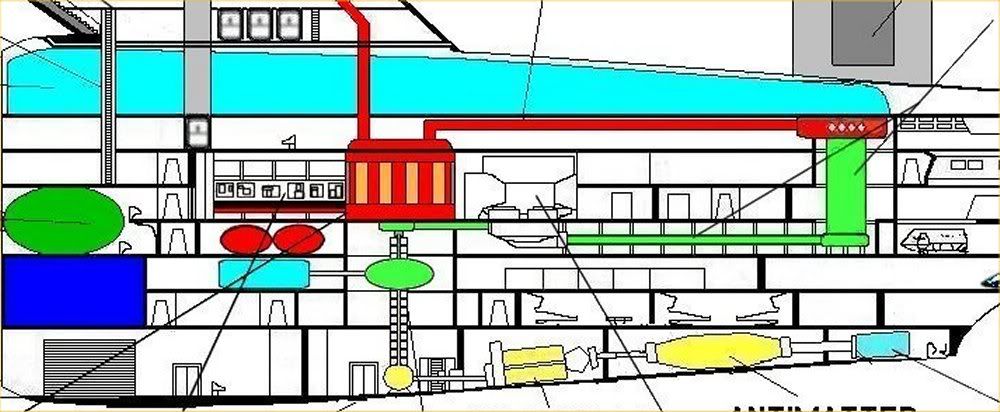The Bussard collectors have nothing to do with the warp drive.
Irrelevant, since their placement on the warp nacelles has the exact same logic as placing air intakes outboard from the fuselage. And Bussard collectors are almost never placed on something OTHER than the warp nacelles. Which may or may not explain why Starfleet doesn't protect its warp core and engines by sinking both the core and the drive coils deep inside a large bulky hull.
Also, to the matter of survivability, like you said, when a warp core start to go, there's not gonna be a lot of warning.
Actually, what
I said was that a warp core breach will usually give you
just enough warning to dump the core before it blows. I was referring to jet engines, for whom any catastrophic failure turns the engine into a giant hand grenade.
And if you have a situation where the thing is gonna blow in two minutes unless A, B, and C are done, do you want that reactor waaaaaaay out there on a nacelle where it takes five minutes to get to under the best of circumstances?
Since A, B and C invariably require the pressing of buttons on a computer console in the chief engineer's office, I wouldn't mind at all. Basic maintenance can be done with an ordinary site to site transporter (faster than turbolifts).
Consider this: Under what I guess can be defined as "the official model", where we have one central reactor channeling power to the nacelles, and a nacelle takes a hit or suffers some catastrophic damage, in most cases, the nacelle is knocked out of commission and the ship's warp capability is severely reduced (in extreme cases, a power surge back into the ship is created and the ship blows up, but it takes a little while to happen, say, a minute or two).
In "most" cases? We've only seen this happen a handful of times in the history of Trek. Off the top of my head: Reliant vs. Enterprise, Enterprise vs. Bozeman, Equinox vs. Voyager, Odyssey vs. Jem'hadar, Enterprise vs. Scimitar. The latter two cases involved relatively superficial damage that in any case deprived the ship of warp power. The former two involved severe damage to the nacelle that lead directly to a warp core breach. Only Reliant stands out as a counter example, with the entire port nacelle being blown completely off. Hard the warp core been in Reliant's power nacelle, it would have sailed off into space WITH the nacelle and then exploded elsewhere.
Put your primary matter/antimatter reactors out there, however, and something bad happens, and ship go boom before you can even say "eject."
The NACELLE goes boom, sure. But the same safety mechanisms designed to automatically eject a warp core in the event of an emergency would be able to eject a nacelle with greater ease. The only difference is the Nacelle is already outboard from the ship where an explosion can be repelled by the ship's own deflector shields, so even if the nacelle jettisons too late, the ship may yet survive.
And considering that we've seen an ounce of antimatter rip away half the atmosphere of a class M planet, no, the ship would not survive a M/ARC blowing up in the nacelle.
Why not? Starships habitually survive matter-antimatter detonations against their own hulls without being destroyed. Even in the case of Reliant, the nacelle was blown off by a photon torpedo with SHIELDS DOWN. Same again for Equinox, whose port nacelle was destroyed by a direct hit from one of Voyager's torpedoes. So canonically speaking, any such high energy detonation in a warp nacelle is perfectly survivable, while a similar detonation in MAIN ENGINEERING will destroy the entire ship.




